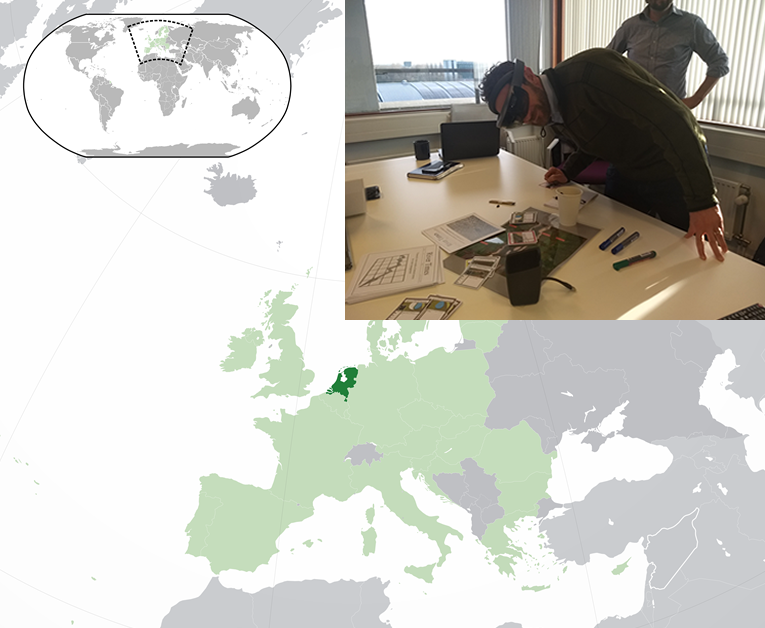DWR-Netherlands Collaboration
Meeting Dutch water resource engineers.
By Andrew Schwarz
As a state worker, we don’t often get to travel out of the state, let alone out of the country, so when a colleague of mine at the US Army Corps of Engineers-Hydrologic Engineering Center invited me to accompany him to the Netherlands for three days of meetings with Dutch water resource engineers and planners, I jumped at the opportunity. I was invited to share some work that DWR has been doing with the University of Massachusetts and University of Cincinnati related to an approach to climate change planning called Decision Scaling. The results of the study will be published in the upcoming 4th California Climate Change Assessment.
In addition to my presentation to the Dutch, we spent three days meeting with various project groups hearing about their work and brainstorming ways to incorporate their experiences and knowledge into our work. My take-away from the experience was that the Dutch reputation for unparalleled expertise and progressive planning and engineering of water resources is well deserved. From their procedure for establishing economically efficient flood protection standards throughout a country that faces flooding from both its rivers and the sea to their water use prioritization approach, the Dutch seem to have broken through the thorny societal disagreements that, here in California, seem to paralyze our ability upgrade our infrastructure while protecting our natural resources.
Two particular examples stand out. First, on the morning of our third day we took a short field trip out to see one of the “room-for-the-river” projects. De Biesbosch National Park is an area at the confluence of the Nieuwe Merwede and the Amer Rivers. The area was once thriving farming and fishing area with 10s of thousands of residents, but after several severe flooding events the area was turned into a national park, which among other things serves as a massive flood protection area and water supply area for downstream cities like Rotterdam. Agricultural activities still exist inside the park but are mostly confined to higher areas that are designed to provide flood water storage during only the most extreme events. I couldn’t help but wonder if certain elements of De Biesbosch National Park might be models for our own Sacramento-San Joaquin Delta. And second, was a demonstration of “serious gaming”. In an effort to get stakeholders and diverse parties to sit down and work together to envision potential futures, the folks at Deltares (a Dutch independent applied research institute) are developing serious games. These games place stakeholders in real world situations, combined with real-time simulation tools, and in the most advanced cases virtual reality, to help the stakeholders envision—and even see and feel—how potential planning decisions could change their communities. In the picture below, I’m trying out some “mixed-reality” glasses that project visualizations on to the table top of the decisions we made during our game.
